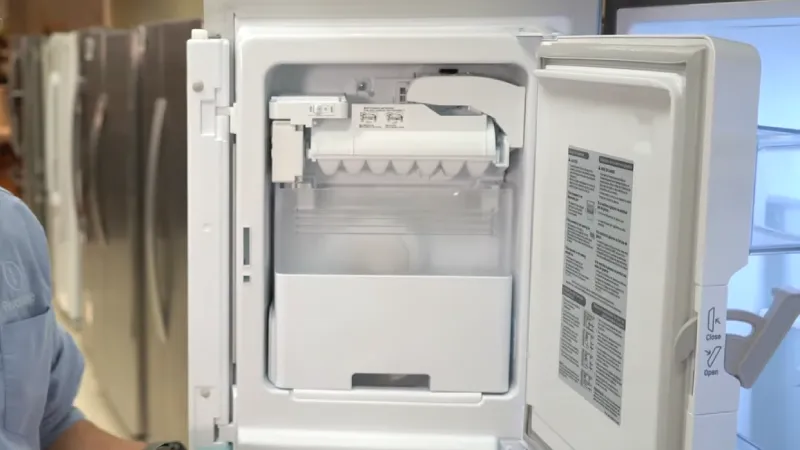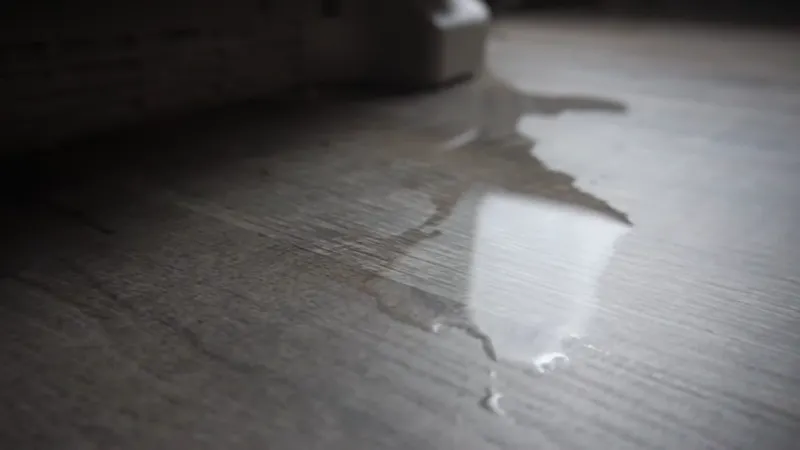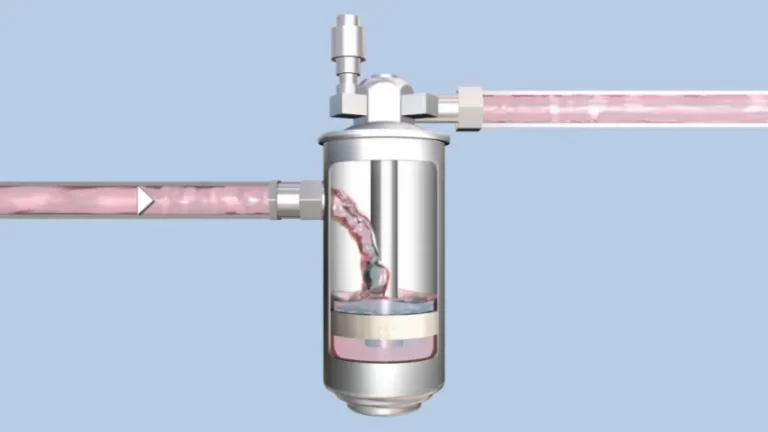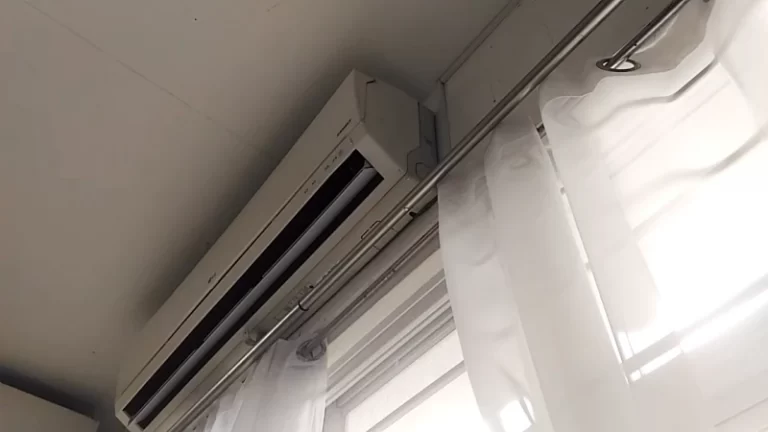Amana Bottom Freezer Refrigerator Ice Maker Problems and Solutions
Amana bottom freezer refrigerators are a popular choice for their spacious storage and energy efficiency. One important feature of these refrigerators is the ice maker, which provides a convenient source of ice for your drinks and recipes.
However, like any other appliance, ice makers can experience problems and malfunctions. In this blog, we will discuss the most common ice maker problems in Amana bottom freezer refrigerators. Our aim is to help you diagnose and resolve these issues, so you can get back to enjoying the benefits of a fully functional ice maker.
You'll Learn About
Amana Bottom Freezer Refrigerator Ice Maker Problems
Amana bottom freezer refrigerators can experience issues with their ice makers. Some common problems include the ice maker not producing ice or dispensing ice properly. Before troubleshooting, it’s important to ensure that the ice maker is turned on and that the water supply is connected to a cold source.
Other factors that can affect the ice maker’s performance include clogging in the ejector’s arm or chute, the fridge door being opened frequently, or a low temperature setting.
In some cases, the water inlet valve or the ice maker assembly may be defective. Regular maintenance, such as checking door gaskets and condenser coils every three months, can help prevent these issues from occurring. If the ice maker is still not working, resetting the refrigerator by unplugging it for 5-10 minutes and then plugging it back in may resolve the issue.
If the Amana bottom freezer refrigerator is making noises, it could be due to the fridge’s door being open for too long and triggering an alarm. It’s important to find the cause of the noise in order to resolve the issue.
Problem #1: Ice Maker Not Turning on
One of the most common problems with an ice maker is when it does not turn on. This can be a frustrating experience, especially when you need ice for a drink or recipe. There are two main causes of this problem: power issues and incorrect settings.
Causes of the Problem
Power Issues: The first and most obvious cause of an ice maker not turning on is a power issue. If your ice maker is not receiving electricity, it will not be able to function. This could be due to a tripped breaker, a blown fuse, or a power outage.
Settings not Correctly Configured: Another possible cause of an ice maker not turning on is incorrect settings. Some refrigerators have a switch or button that must be activated in order for the ice maker to work.
Make sure that this switch is in the “on” position, and that the ice maker is set to the correct mode.
How to Diagnose and Fix the Problem
To diagnose the problem, you should first check the power source. If there is no electricity reaching the ice maker, you should check the breaker or fuse box and reset any tripped breakers or replace any blown fuses.
If the power source is fine, you should then check the settings. Make sure that the switch or button is in the “on” position, and that the ice maker is set to the correct mode. If the switch or button is in the correct position, you may need to check the wiring and connections to the ice maker to make sure that everything is properly connected.
If your ice maker is not turning on, it is important to diagnose the problem as quickly as possible. By following these simple steps, you can quickly resolve any power or settings issues and get your ice maker back up and running.
Problem #2: No Water Supply to the Ice Maker
Another common problem with an ice maker is when there is no water supply. This can result in a lack of ice or slow ice production. There are two main causes of this problem: a clogged water inlet valve and a broken water supply line.

Causes of the Problem
Clogged Water Inlet Valve: The water inlet valve is responsible for supplying water to the ice maker. If the valve becomes clogged with mineral buildup or debris, it can reduce or stop the flow of water to the ice maker.
This can result in no ice production or slow ice production.
Broken Water Supply Line: Another possible cause of no water supply to the ice maker is a broken water supply line. This can occur if the line becomes kinked, pinched, or damaged in some other way. If the water supply line is broken, no water will be able to reach the ice maker, resulting in no ice production.
How to Diagnose and Fix the Problem
To diagnose the problem, you should first check the water supply line. If the line is kinked or pinched, you should straighten it out and repair any damage.
If the water supply line is in good condition, you should then check the water inlet valve. If the valve is clogged, you can try cleaning it with a solution of vinegar and water. If the valve is damaged, you will need to replace it.
If your ice maker is not receiving water, it is important to diagnose the problem as quickly as possible. By following these simple steps, you can quickly resolve any water supply issues and get your ice maker back up and running.
Problem #3: Ice Maker Not Producing Ice
Causes of the Problem
One of the most common issues with an ice maker is when it stops producing ice. There could be a few reasons why this is happening in your Amana bottom freezer refrigerator. Let’s take a look at some of the most common causes of this problem.
Low refrigerator temperature
The first thing to check when your ice maker stops producing ice is the temperature of the refrigerator. The temperature needs to be low enough for the ice to freeze, and if the temperature is too high, the ice won’t freeze and won’t be able to be dispensed. Check the temperature setting on your refrigerator and make sure it is set to the right level.
Clogging in the ice maker’s ejector arm or chute
Another common reason why an ice maker may stop producing ice is clogging in the ejector arm or chute. The ice may be getting stuck somewhere in the dispensing mechanism, preventing it from being dispensed. Check the ejector arm and chute for any ice that may have built up, and clear it if necessary.
How to Diagnose and Fix the Problem
If you’re experiencing an issue with your ice maker not producing ice, there are a few things you can try to diagnose and fix the problem.
- To start, check the temperature setting on your refrigerator and make sure it’s set to the right level. If the temperature is too high, lower it until it’s at the proper level.
- Next, check the ejector arm and chute for any ice that may have built up. If there is ice built up, clear it out and make sure the arm and chute are free from any other obstructions.
- If you’re still experiencing issues with your ice maker, you may need to call a repair service to diagnose and fix the problem. A professional repair service will be able to determine the root cause of the issue and make any necessary repairs to get your ice maker back up and running.
If your Amana bottom freezer refrigerator’s ice maker is not producing ice, it’s likely due to low refrigerator temperature or clogging in the ejector arm or chute. By checking the temperature setting and clearing any clogs in the dispensing mechanism, you should be able to diagnose and fix the problem yourself. If not, call a repair service to get your ice maker back in working order.
Problem #4: Ice Maker Not Dispensing Ice
Causes of the Problem
There are two main causes of ice maker not dispensing ice: jammed ice in the dispenser and a broken dispenser mechanism.
Jammed Ice in the Dispenser
The dispenser chute can become clogged with ice, making it difficult for ice to dispense. This can happen if you use too much ice in a short period of time or if you don’t regularly clean the dispenser.
Broken Dispenser Mechanism
Over time, the dispenser mechanism can wear out or break down, causing it to no longer dispense ice. This can happen due to normal wear and tear or due to an unexpected issue such as a power surge.
How to Diagnose and Fix the Problem
To diagnose the issue with your ice maker not dispensing ice, follow these steps:
Check the Dispenser Chute
Check the dispenser chute for any signs of ice blockage. If you find ice blocking the chute, try to break it up and clear it away.
Check the Dispenser Mechanism
If there are no signs of ice blockage in the dispenser chute, the problem may be with the dispenser mechanism. Check the dispenser mechanism for any signs of wear or damage, such as cracks or loose parts.
To fix the problem with your ice maker not dispensing ice, follow these steps:
Unclog the Dispenser Chute
If ice is blocking the dispenser chute, try to break it up and clear it away. You can use a small object, such as a toothpick, to help break up the ice.
Replace the Dispenser Mechanism
If the dispenser mechanism is damaged or worn out, you will need to replace it. This may require the services of a professional technician. Contact your manufacturer or a local repair service for more information on how to replace the dispenser mechanism.
By following these steps, you can diagnose and fix the issue with your ice maker not dispensing ice. If you are unable to fix the problem on your own, consider reaching out to a professional technician for assistance.
Problem #5: Abnormal Noises Coming From the Ice Maker
Causes of the Problem
Loose or damaged parts
Abnormal noises are generally caused by issues with the ice maker’s motor. Some issues may include:
- Worn or worn-out gears
- Damaged wires
- Insufficient cooling fans
- Poor motor mount assembly
In some cases, noise coming from the ice maker can be caused by a loose cable or a damaged motor mount assembly.
How to Diagnose and Fix the Problem
To diagnose the cause of abnormal noises from an ice maker, start by performing a visual inspection of the unit. Look for any loose or damaged parts and tighten or replace them as needed. If the problem persists, try reducing the amount of ice produced by adjusting the settings on the ice maker.
If these solutions don’t work, you may need to replace the entire ice maker assembly.
To prevent abnormal noises in the future, be sure to handle the ice maker with care during cleaning and installation, and keep it well-maintained with regular cleaning and inspections. Additionally, be mindful of how much ice you’re producing and adjust the settings as needed to prevent overworking the ice maker.
If your Amana bottom freezer refrigerator’s ice maker is making abnormal noises, it’s important to diagnose and fix the problem as soon as possible to ensure that it continues to work properly. Whether the problem is caused by loose or damaged parts, overworking, or something else, with a little bit of troubleshooting, you can get your ice maker back to working smoothly and quietly in no time.
Problem #6: Water Leaking From the Ice Maker

Causes of the Problem
In addition to the ice maker itself, there are a few common issues that may cause water to leak from the unit. Let’s take a look at some of the most common causes of water leaking.
Overly humid or wet environment
Because the ice maker’s temperature settings are designed to keep the ice in its optimal condition, you can experience problems if the unit is operating in a humid environment. If the humidity is too high, the ice may begin to mold, creating cracks and mold growth on the ice.
Frozen water in the bin
If there is a significant amount of water in the ice bin, it can cause an airtight seal to break or cracks to form in the ice bin. Ice can begin to break away, which can result in small chunks of ice falling through the ice bin.
Poorly designed ice maker
An improperly designed ice maker can allow water to drip into the unit from the motor, cooling fins, or any other part of the unit. If water is allowed to drip into the ice maker from the motor, it can start to wear out prematurely.
Other possible causes
Even if your ice maker doesn’t leak water, it is still important to conduct regular inspections and maintenance to help prevent other issues from occurring. The best way to keep your unit in good condition and maintain your ice maker is to be mindful of how you operate it, how you maintain it, and any potential issues that could occur.
How to Diagnose and Fix the Problem
Before attempting to fix the problem on your own, it’s important to first check for signs of flooding, leaks, or damage. If you see any issues or damage on the unit, contact a repair service or professional immediately.
If there are no signs of damage or flooding, it’s a good idea to start by checking the humidity level in the area where the unit is located.
Next, if the issue persists, you can follow the steps below to identify the most likely cause of the problem and perform an inspection to try to locate it.
Check the Ice Bin
Start by checking the ice bin for any signs of water damage. If you find a hole in the bin or water damage, you may need to purchase a new bin.
Check the Motor
Next, inspect the motor. If you see any signs of damage or any debris in the area around the motor, you may need to replace the motor.
If the problem persists, you can call a repair service to conduct a more thorough inspection of the ice maker to determine the root cause of the problem. If you still can’t determine the issue, your best option is to replace the ice maker.
Conclusion
Amana bottom freezer refrigerators are a popular choice for their reliable performance and efficient storage. However, like all appliances, ice makers can experience problems that can impact their performance.
The five common problems discussed in this blog include the ice maker not turning on, no water supply to the ice maker, not producing ice, not dispensing ice, and abnormal noises coming from the ice maker.
Regular maintenance and diagnosis can help prevent these problems from occurring and keep your ice maker working at its best. By understanding the causes and solutions to these common problems, you can quickly resolve any issues that arise and ensure your Amana bottom freezer refrigerator continues to function properly.


